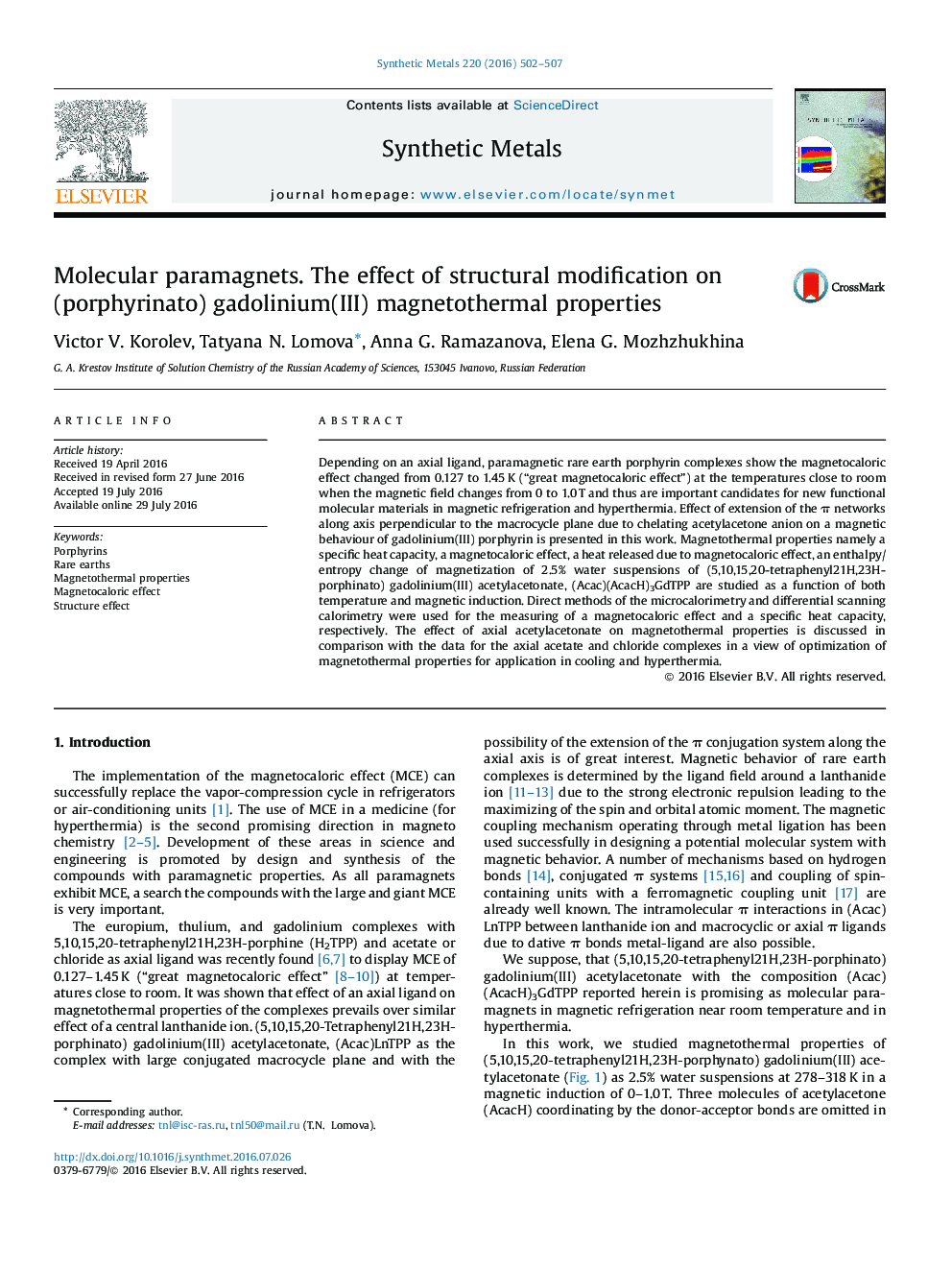| Article ID | Journal | Published Year | Pages | File Type |
|---|---|---|---|---|
| 1440121 | Synthetic Metals | 2016 | 6 Pages |
•Magnetothermal properties of (5,10,15,20-tetraphenyl21H,23H-porphinato) gadolinium(III) acetylacetonate are studied for the first time.•Magnetocaloric effect in (Acac)GdTPP of 0.38 K at ΔB 0–1 T and T 278 K is only slightly lower than in polycrystalline gadolinium and gadolinium ferrite.•The effect of axial acetylacetonate on magnetothermal properties is established in a view of application in cooling and hyperthermia.
Depending on an axial ligand, paramagnetic rare earth porphyrin complexes show the magnetocaloric effect changed from 0.127 to 1.45 K (“great magnetocaloric effect”) at the temperatures close to room when the magnetic field changes from 0 to 1.0 T and thus are important candidates for new functional molecular materials in magnetic refrigeration and hyperthermia. Effect of extension of the π networks along axis perpendicular to the macrocycle plane due to chelating acetylacetone anion on a magnetic behaviour of gadolinium(III) porphyrin is presented in this work. Magnetothermal properties namely a specific heat capacity, a magnetocaloric effect, a heat released due to magnetocaloric effect, an enthalpy/entropy change of magnetization of 2.5% water suspensions of (5,10,15,20-tetraphenyl21H,23H-porphinato) gadolinium(III) acetylacetonate, (Acac)(AcacH)3GdTPP are studied as a function of both temperature and magnetic induction. Direct methods of the microcalorimetry and differential scanning calorimetry were used for the measuring of a magnetocaloric effect and a specific heat capacity, respectively. The effect of axial acetylacetonate on magnetothermal properties is discussed in comparison with the data for the axial acetate and chloride complexes in a view of optimization of magnetothermal properties for application in cooling and hyperthermia.
Graphical abstractFigure optionsDownload full-size imageDownload as PowerPoint slide
